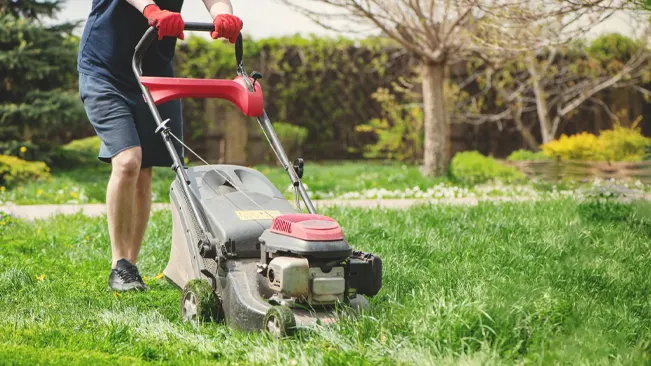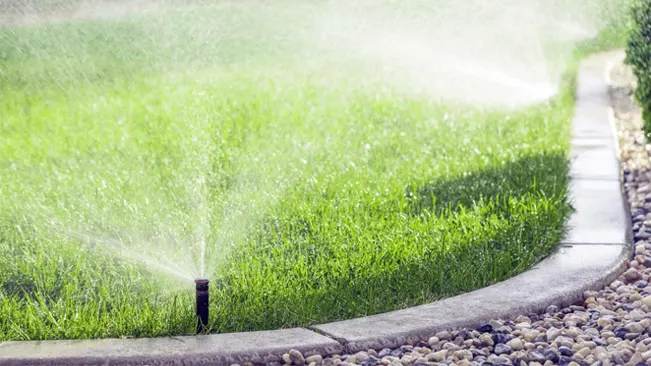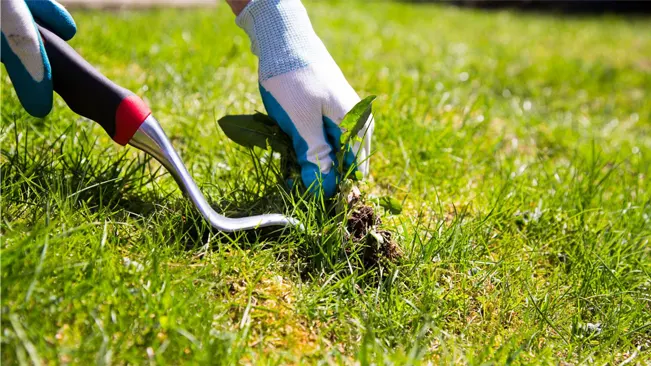How to Improve Your Lawn: Beginner Care Tips
- February 29, 2024
- 0 comment
Embarking on the path to lawn care excellence can feel like a daunting task for beginners, yet it is an incredibly rewarding journey with the right guidance. Our comprehensive guide aims to demystify the process, providing you with a step-by-step approach to transforming your green space into a thriving, eye-catching haven. Delving into the core aspects of lawn maintenance, from the intricacies of proper mowing techniques to the nuances of effective watering and timely fertilization, we cater to those looking to rehabilitate a long-neglected lawn or starting afresh with a new plot.

Our expert advice is designed to lay a solid foundation for your lawn care journey. By following these beginner-friendly tips, you’ll be well on your way to cultivating a lush, vibrant lawn that not only enhances the beauty of your home but also becomes a source of personal pride and satisfaction.
List on How To Improve Your Lawn
Unraveling the Mysteries of Lawn Care
Unraveling the mysteries of lawn care opens up a world where the green beneath your feet is more than just grass; it’s a canvas of growth and vitality. As you step into this verdant realm, you’ll discover that each blade of grass holds the potential for beauty and rejuvenation. This journey is not just about maintaining a lawn but nurturing a living tapestry that enhances your home and well-being. With each mow, water, and fertilize, you’re not just caring for your lawn; you’re crafting an outdoor sanctuary. Embrace the art and science of lawn care, and watch as your garden transforms into a lush, thriving haven.
Step 1: Mastering the Mow
Mowing goes far beyond the simple task of keeping your grass at a manageable height; it’s an essential practice that fosters robust growth and vitality within your lawn. Engaging in regular mowing sessions doesn’t just trim the tips of your grass; it stimulates the lawn to grow denser and more vigorous, creating a lush, verdant carpet that’s not only pleasing to the eye but also more resilient against the invasion of pests and the spread of diseases.

This routine task, often viewed as a mundane chore, is in fact a critical component of effective lawn care, laying the foundation for a healthy, thriving outdoor space. By understanding and embracing the importance of consistent mowing, homeowners can transform their lawn into a vibrant ecosystem that enhances the overall beauty and health of their landscape.
Step 2: The Essence of Watering
Watering your lawn is more like mastering a delicate dance than following a rigid formula. It’s about intuitively knowing how to satisfy your lawn’s needs without overdoing it. While the rule of thumb suggests an inch of water per week, it’s not just about sticking to this guideline.

You’ve got to keep an eye on the sky and feel the soil, adjusting your watering habits to match the mood swings of the weather. This approach turns lawn care into a personal journey, where you learn to read the signs of your lawn and respond with a gentle, knowing touch, ensuring your green space thrives come rain or shine.
Step 3: Nourishing Your Green
Fertilization stands as the cornerstone of cultivating a lawn that doesn’t just survive but truly flourishes, teeming with life and vitality. By introducing organic fertilizers into your lawn care regimen, you embark on a path that not only simplifies the nurturing process but also ensures your grass receives all the necessary nutrients in a balanced, gentle manner. This approach minimizes the chances of nutrient overload, which can be detrimental to your lawn’s health, promoting a sustainable growth environment.

Organic fertilizers release nutrients slowly, feeding your lawn over time and fostering a deep, resilient root system. This method supports a healthy ecosystem within your lawn, encouraging not just the growth of grass but also the beneficial microorganisms that contribute to the soil’s fertility, leading to a lush, vibrant outdoor space that’s both beautiful and environmentally friendly.
Step 4: Winning the Weed War
For anyone passionate about their lawn, the presence of weeds can be a constant challenge, detracting from the beauty and health of their carefully cultivated green space. Yet, by adopting a strategic mindset and initiating a plan with post-emergent treatments, it’s possible to effectively manage these unwelcome intruders. This method involves targeting weeds that have already surfaced, ensuring they don’t have the opportunity to spread or seed further.

By systematically addressing each weed outbreak and maintaining a vigilant eye on new growths, you can significantly reduce the presence of these pesky plants. This proactive and focused approach not only preserves the aesthetic appeal of your lawn but also contributes to its overall vitality, ensuring that your grass remains the star of the show without competition from unwanted foliage.
The Power of Consistency
Achieving a stunning lawn is all about consistent care rather than hidden secrets. It’s the regular routine of mowing, watering, and fertilizing that turns a simple grassy area into a vibrant outdoor haven. This ongoing commitment ensures that your lawn gets the precise care it needs to flourish, from the ideal mowing height to the perfect balance of hydration and nutrients. Over time, this consistent effort pays off, transforming your lawn into a lush, healthy landscape that reflects the dedication behind its upkeep.
Beyond the Basics: Advanced Care and Maintenance
Elevating your lawn from good to great requires moving beyond the basics into more advanced care and maintenance strategies. These techniques are designed to enhance the health and appearance of your lawn, ensuring it remains lush, resilient, and vibrant throughout the seasons. Here are some advanced care and maintenance tips to help you achieve a truly exceptional lawn:
- Aeration: Periodically aerating your lawn helps relieve soil compaction, allowing air, water, and nutrients to penetrate deeper into the soil, promoting healthier root growth.
- Dethatching: Removing thatch buildup is crucial for preventing disease and pest infestation. A thin layer of thatch is beneficial, but too much can hinder water and nutrient absorption.
- Soil Testing: Conducting a soil test can provide valuable insights into your soil’s pH level and nutrient content, enabling you to tailor your fertilization and treatment plans more effectively.
- Overseeding: Introducing new grass seeds to your existing lawn can help fill in bare spots, improve lawn density, and enhance its overall appearance and resilience.
- Topdressing: Applying a thin layer of quality soil or compost over your lawn can improve soil quality, help reduce thatch, and support new seed growth.
- Pest and Disease Management: Implementing proactive measures to control pests and diseases is essential for maintaining a healthy lawn. This may include using eco-friendly treatments and practicing good lawn hygiene.
- Seasonal Adjustments: Tailoring your lawn care routine to the changing seasons ensures your lawn receives appropriate care year-round, from winterizing to spring rejuvenation.
Conclusion
Lawn care is more than nurturing grass; it’s a journey of personal growth and resilience. Each task, from mowing to watering, is a step towards not just a healthier lawn, but also a more patient and dedicated self. Remember, every expert gardener once started with a single patch of green, just as you do now. With time, commitment, and a bit of patience, your lawn will flourish, mirroring the personal growth you experience along the way. Embrace this journey, for it promises the dual rewards of a beautiful lawn and a stronger, more resilient you.
FAQs
- What are the first steps I should take as a beginner in lawn care?
Begin with the basics: learn to mow correctly, establish a watering routine, and start a simple fertilization program. These foundational steps set the stage for a healthy lawn. - How often should I water my lawn, and how much water does it need?
Generally, your lawn needs about 1 inch of water per week, either from rainfall or watering. It’s best to water deeply and infrequently to encourage deep root growth. - Why is mowing important, and how do I determine the correct mowing height?
Regular mowing promotes a thicker, healthier lawn by encouraging grass to grow densely, which can help crowd out weeds. The correct mowing height depends on your grass type; check specific guidelines for your grass species. - Can overwatering harm my lawn?
Yes, overwatering can lead to shallow root systems, weed proliferation, disease, and fungus. It’s essential to allow the soil to dry somewhat between waterings. - What type of fertilizer should I use, and how often?
For beginners, an organic, slow-release fertilizer is a good start as it’s less likely to burn your lawn. Fertilize in early spring, late spring, and early fall, but the exact schedule can vary based on your climate and grass type. - How do I deal with common lawn weeds?
Identify the type of weeds in your lawn first, as treatment can vary. Generally, maintaining a healthy lawn through proper mowing, watering, and fertilization can prevent many weeds. For persistent problems, consider a selective herbicide that targets weeds but leaves grass unharmed. - What are the signs that my lawn is unhealthy, and what can I do about it?
Signs of an unhealthy lawn include patchy areas, discoloration, and the presence of pests or diseases. Addressing the specific issue, whether it’s adjusting your watering routine, fertilizing, or applying a treatment, can help restore your lawn’s health. - Is aeration necessary, and if so, how often should I aerate my lawn?
Aeration helps relieve soil compaction, allowing water, air, and nutrients to reach the roots more effectively. Aerate your lawn at least once a year, ideally during your lawn’s peak growing season. - How do I choose the right lawn mower, and what maintenance does it need?
Choose a mower that suits the size of your lawn and your personal preferences (e.g., push vs. ride-on, gas vs. electric). Regular maintenance includes sharpening the blades, changing the oil, and cleaning the undercarriage. - What should I do to prepare my lawn for winter?
In late fall, continue to water and mow your lawn as needed until growth stops. Apply a winter fertilizer to promote root development and prepare your lawn for the cold months ahead. Remove debris and leaves to prevent mold and disease.

Charles Hayes
Forestry AuthorI'm Charles Hayes, I bring over 15 years of specialized expertise in landscaping and woodworking, blending artistic design with sustainable environmental stewardship. My career, fueled by a profound passion for the natural world, encompasses extensive education and hands-on experience in creating harmonious, eco-friendly outdoor spaces and responsibly managing forest resources. Recognized for my professional standing, I am committed to continuous learning and certification in cutting-edge practices. My expertise is not only reflected in my work but also in my contributions to community projects, educational workshops, and collaborations with industry leaders. As an authoritative voice in my field, I strive to share knowledge and promote environmentally conscious approaches, making me a trusted resource in landscaping and forestry.













Leave your comment